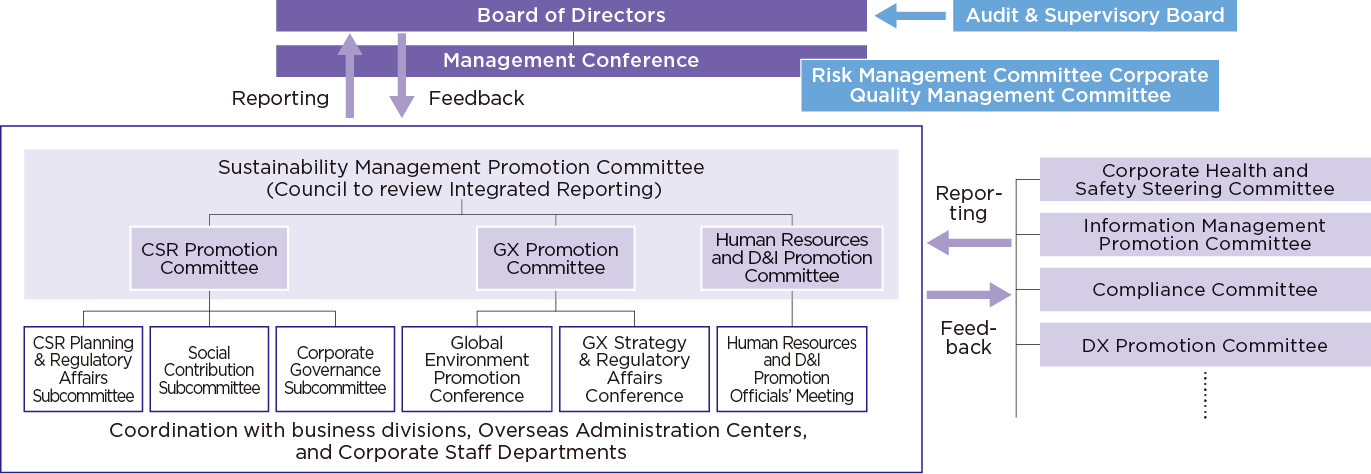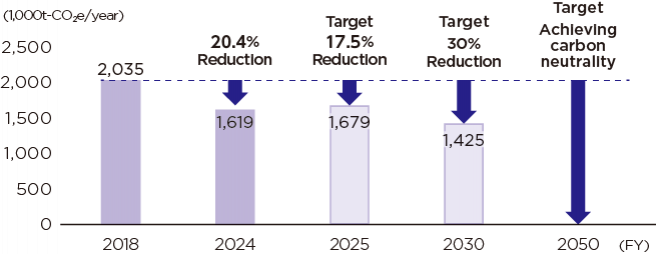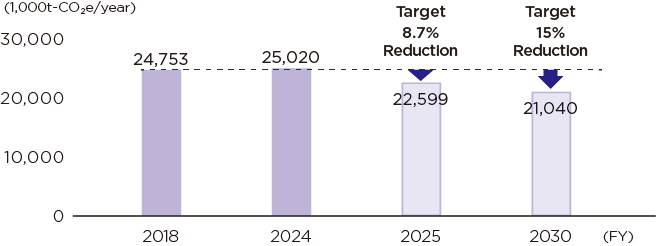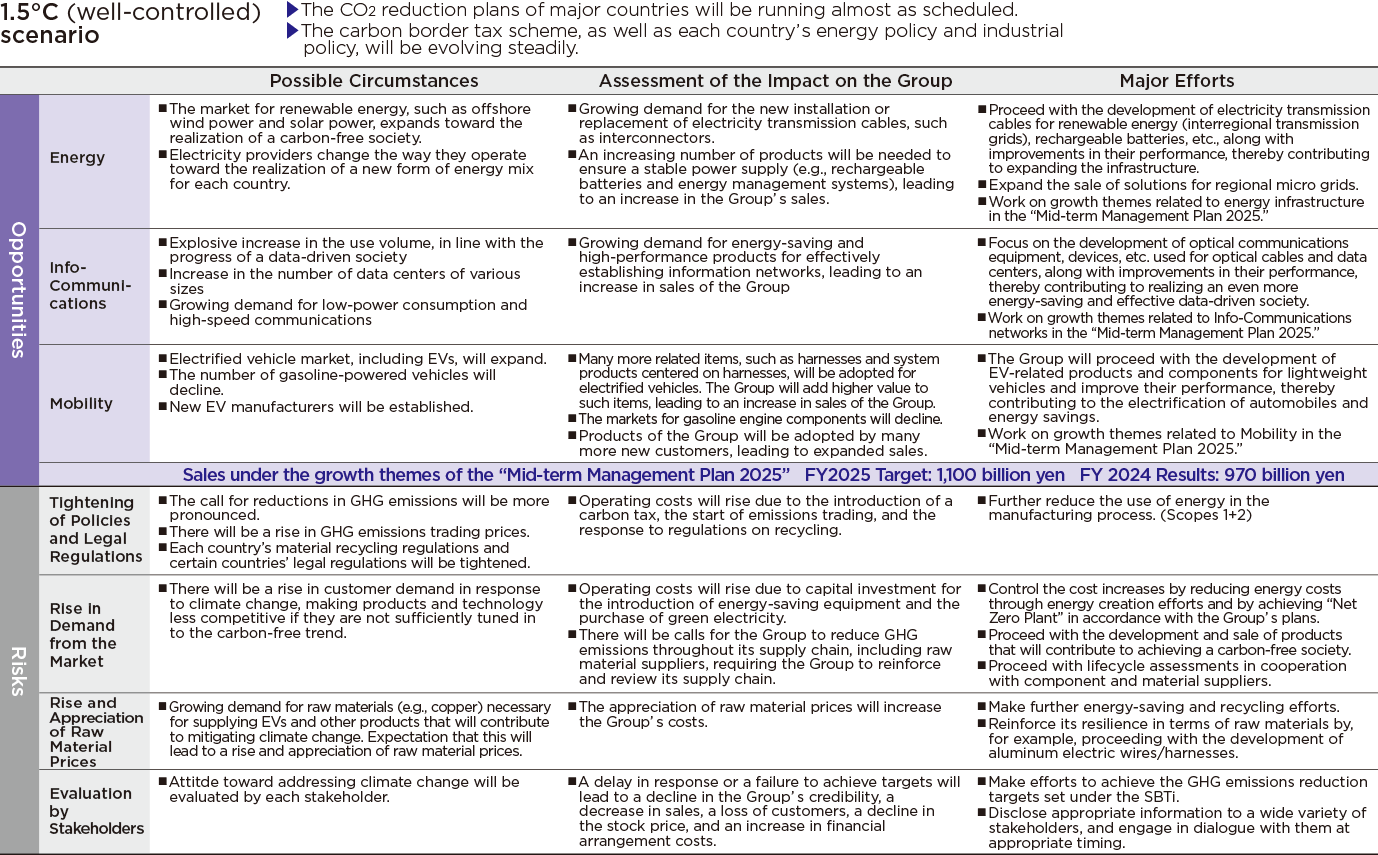Information Disclosure of Climate Change in Line with the TCFD Recommendations
The Sumitomo Electric Group sees that its most significant management challenges include addressing climate change and other global environmental problems. In accordance with Environmental Policy established in 1997, the Group has been committed to environmental preservation efforts from a global perspective.
Moreover, in May 2021, the Group expressed its endorsement of the recommendations of the Task Force on Climate-related Financial Disclosures (TCFD), formed by the Financial Stability Board (FSB), to disclose information related to risks and opportunities brought about by climate change.
In addition, the Corporate Governance Code was revised in June 2021. With this background, the Company has disclosed important information related to climate change as below in line with the TCFD recommendations and the code revision.
In May 2022, in line with TCFD (the Task Force on Climate-related Financial Disclosures) recommendations, disclosure was made on four items related to climate change, namely: Governance, Strategy, Risk management and Metrics and Targets; and we also shared our scenario analysis.
1.Governance
Under the principle of Contribution to the Preservation of the Global Environment stipulated in the Sumitomo Electric Group Charter of Corporate Behavior, the Sumitomo Electric Group acts independently and proactively in order to preserve the global environment and contributes to achieving a sustainable society.
In February 2021, the Company established the Sustainability Management Promotion Committee, chaired by the President and composed of members from a wide variety of related departments. The committee is intended to establish a basic policy for the Group’s sustainability commitments and discuss specific targets and procedures related to our response to climate change and other global environmental problems. These discussions of the Committee are reported to the Management Conference and then deliberated at the Board of Directors.
To further explore specific measures from an expert point of view, the Company has also established a Global Environment Promotion Conference under the GX Promotion Committee, and initiates measures against climate change, such as reducing greenhouse gas (GHG) emissions.

2.Strategy
The Sumitomo Electric Group has set the Three Pillars for Global Environmental Activities—to give back to the Earth and society, to hand down the blessings of the Earth to the next generation, and to minimize the impact on the Earth. The Group is committed to reducing in-house use of energy, increasing the ratio of renewable energy, and decreasing GHG emissions through its products and services.
The Company has analyzed the business impact expected to be caused by the risks and opportunities related to climate change and consider future initiatives based on two scenarios: one in which the rise in the world’s average temperature is limited to 1.5℃ above pre-industrial levels, and the other in which the average temperature increases by 4℃. The results of the scenario analysis are shown in the addendum table.
3.Risk Management
For risk management, the Sumitomo Electric Group assesses the severity of the respective risks in line with the Basic Policy of Risk Management, which provides criteria for assessing the significance of risks. With respect to the environment and other group-wide risks, the Corporate Staff Group responsible for respective risks, as well as committees organized by officers in charge, promote the necessary measures throughout the Group. Meanwhile, distinctive risks entailed by the promotion of respective business operations are managed by the relevant Production Group.
For top-priority issues, such as global environment preservation, targets and approaches are set under the lead of the Risk Management Committee, with the Safety & Environment Division serving as the main player and ensuring cooperation with the relevant Corporate Staff Group in consideration of the deliberations of the Global Environment Promotion Conference. Based on these targets and approaches, each Production Group sets its own targets and proceeds with the necessary activities.
To address risks related to climate change, the Compliance & Risk Management Office plays the main role in encouraging business continuity plans (BCPs) to be established. As indicated by this, while placing the first priority on ensuring safety, the Sumitomo Electric Group also focuses on minimizing damage generated at the time of a disaster and ensuring business continuity.
4.Metrics and Targets
Toward the following GHG emissions reduction targets to be achieved by 2030 and 2050, the Sumitomo Electric Group is making efforts to reduce GHG emissions in its production activities and throughout its supply chain. The 2030 targets have been certified by the international initiative "Science Based Targets initiative (SBTi). "
In order to achieve the target and minimize the impact on the global environment through self-help efforts, the Sumitomo Electric Group places the utmost emphasis on saving energy, while creating energy and also purchasing energy to cover the shortfall. In accordance with this basic policy, the Group will proceed with reductions in GHG emissions.
*Saving energy: Introducing new manufacturing techniques and equipment engineering and making other efforts through cooperation between production groups, R&D groups, and manufacturing engineering groups toward the target of increasing energy productivity 1.5-fold by 2030 and three-fold by 2050 (compared to FY2018)
*Creating energy: Creating green electricity in-house through, for example, solar power generation
*Purchasing energy: Increasing the ratio of renewable energy procured from an electricity company and proceeding with the purchase of green electricity
GHG Emissions Reduction Targets and Results
| 2030 Targets | By 2030 - Scope 1+2: 30% reduction; Scope 3: 15% reduction (compared to FY2018) |
|---|---|
| 2050 Targets | By 2050 – Scope 1+2: Achievement of carbon neutrality (net-zero GHG emissions) |
*Scope1+2:Direct emissions of GHGs by the Sumitomo Electric Group itself and indirect emissions from the use of electricity, heat, and steam supplied by other companies
*Scope3:Indirect emissions other than Scope 1 and Scope 2



